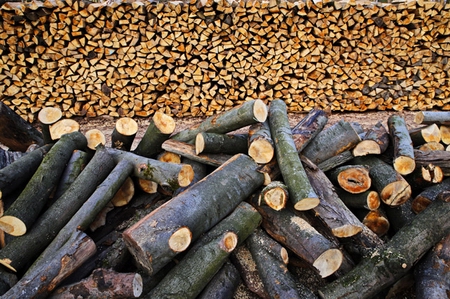
The future of food will be famine and war.
No, wait, that’s not quite right: The future of food will be like a famine; it will taste like wartime. Or: In the future, we’ll eat the foods of famine and war—grass, wood, bark, sawdust.
Researchers at Virginia Tech have developed a new method of unlocking digestible starches from cellulose, a carbohydrate found in all plants that human stomachs can’t cope with. The study, published in the Proceedings of the National Academy of Sciences of the United States of America, points out that “the global demand for food could double in another 40 years owing to growth in the population and food consumption per capita.” If “enzymatic conversion of pretreated biomass to starch” can turn the stalks and leaves of corn into food—or even wood and grasses that aren’t cultivated as food crops—sustenance would be far easier to come by.
Using “A special polypeptide cap in potato alpha-glucan phosphorylase” to convert cellulose into amylose, a high-fiber starch, may be a new technology—but the instinct to turn toward non-foods for foods is as old as scarcity itself. Here’s a bit of the somewhat recent history.
As food became harder and harder to come by in Germany during World War I, prominent scientists suggested making bread from all sorts of non-food items, like straw and rushes. In the book Six Thousand Years of Bread, Harry Snyder is quoted as saying that sawdust and wood pulp were the subjects of numerous experiments. “It was hoped that by chemical treatment cellulose could be converted into a digestible carbohydrate,” says Snyder—a failed effort not unlike the one undertook at Virginia Tech.
A few decades later, the word ersatz made the jump from German to English, thanks to another cellulose-heavy moment in the history of diets and conflict: During World War II, the Nazis handed out ersatzbordt, or “replacement bread,” in concentration camps. The loaves were fashioned out of the same ingredients a previous generation of Germans had hoped would fuel their own troops. Accounts from American prisoners of war, who were also fed the bread, refer to a recipe that included rye grains, sugar beets, sawdust and minced tree leaves or straw.
And elsewhere in the theater of war, during the Siege of Leningrad, increasingly starved residents turned to “yeast soup,” a concoction made from a powder derived from fermented birch sawdust.
There are differences, however, between these foods of desperation and the powdered starch that’s created via the Virginia Tech process: Although it’s high in fiber and can’t be wholly digested, amylose is a starch our bodies are accustomed to processing. It’s also incredibly expensive to produce.
According to NPR, one of the scientists inolved with the research, Zhang Percival, “hopes that this kind of technology will allow humans to turn to cellulose as a food source if and when traditional agriculture is up against more severe resource limitations.”
But until costs go down and demand goes up, the starch might be utilized in a less End Times way. Zhang tells NPR he’s thinking fried chicken.





